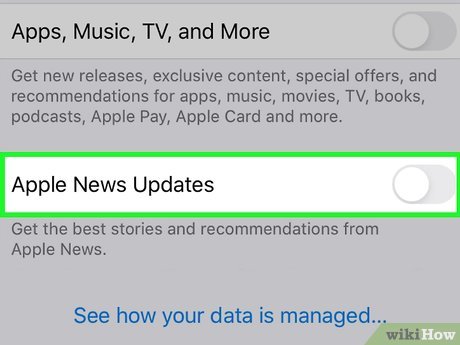Your Complete Guide to Launching a Profitable Car Rental Business
Introduction
Launching a car rental business can be a rewarding opportunity in a robust and growing industry. The U.S. car rental market is valued at over $57 billion annually, with diverse business models ranging from local independents to major franchises. Whether you’re passionate about vehicles or seeking a scalable service business, understanding the concrete steps and challenges is essential for success [5] .
Step 1: Conduct Thorough Market Research
Before making any financial commitment, begin with comprehensive market research. Investigate local demand for rental services: Are you near an airport, tourist destination, or business hub? Analyze existing competitors by visiting their locations, reviewing their online presence, and checking customer reviews. Identify what they do well and where they fall short. Consider surveying potential customers to determine their needs-do they require economy cars, luxury vehicles, or vans for group travel?
For example, a new company in Los Angeles, Legends Car & Van Rentals, succeeded by targeting underserved neighborhoods and offering flexible rental terms, setting themselves apart from large national chains [5] .
Step 2: Develop a Solid Business Plan
Your business plan should outline your target market, services, pricing strategy, and expected expenses. Be specific about your fleet size, types of vehicles, and unique selling points. Include a competitive analysis, marketing plan, and detailed financial projections. This documentation is vital for attracting investors or securing loans.
According to industry research, startup costs-including vehicles, office space, and marketing-can range from $10,000 for a very small operation to nearly $1 million for a larger fleet in a prime location [3] [1] . Carefully estimating these costs will help you choose a business structure that matches your resources.
Step 3: Choose Your Business Model
There are several models to consider:
- Independent Local Business: Offers maximum flexibility but requires more effort in marketing and operations.
- Franchise: Provides brand recognition and operational support but involves higher startup fees (often $20,000+ for the franchise fee alone) and ongoing royalties [5] .
- Peer-to-Peer Platform: Renting out your own or others’ vehicles via established platforms can reduce startup costs, but restricts your control over the business.
Evaluate which approach aligns with your goals, capital, and risk tolerance.
Step 4: Secure Financing and Set Your Budget
Car rental businesses require significant capital, especially for fleet acquisition. Startup costs can range from $10,000 (single-car, home-based) to over $950,000 (20+ car fleet, prime location) [1] . Ongoing monthly expenses-including maintenance, insurance, staff, and marketing-can run from $50,000 to $62,500 for larger operations [2] .

Source: ar.inspiredpencil.com
Financing options include:
- Traditional bank loans or Small Business Administration (SBA) loans
- Leasing vehicles instead of purchasing outright to lower upfront costs (though this can increase long-term expenses)
- Seeking investors or business partners
To learn about current SBA loan programs and eligibility, visit the official Small Business Administration website or contact your local SBA office.
Step 5: Ensure Legal Compliance and Obtain Licenses
Legal requirements vary by state and locality. Common steps include:

Source: theverge.com
- Register your business entity (LLC, corporation, etc.) through your state’s Secretary of State office
- Obtain a federal Employer Identification Number (EIN) from the IRS for tax purposes
- Acquire all necessary business licenses and permits-this may include a general business license, sales tax permit, and special permits for vehicle rental businesses
- Secure comprehensive vehicle insurance and liability coverage. Consult with licensed agents who specialize in commercial auto insurance.
Requirements can differ greatly, so check with your state’s business regulatory agency or seek legal counsel for up-to-date guidance.
Step 6: Acquire and Manage Your Fleet
Your fleet is your core asset. Decide whether to purchase or lease vehicles. Buying vehicles involves higher upfront costs but can be more economical long-term. Leasing may be suitable for those with limited capital but generally results in higher total costs over time [2] .
Popular options include:
- New or late-model sedans, SUVs, and vans for general customers
- Premium vehicles for luxury or executive rentals
- Specialty vehicles (e.g., trucks, electric vehicles) to serve niche markets
Example: A startup in a college town might focus on compact, fuel-efficient cars for student renters, while a tourist-area business could specialize in convertibles or minivans.
Invest in fleet management software to track reservations, maintenance schedules, and utilization rates efficiently.
Step 7: Set Up Your Location and Operations
Choose a location that aligns with your target market-near airports, transit hubs, or busy commercial districts. Costs for real estate and lease deposits vary substantially based on region and property type. For example, lease deposits might range from $2,500 to $25,000, while real estate expenses can be $6,000 to $24,000 or more annually [1] .
Set up an efficient office with necessary equipment: computers, telephones, secure payment processing, and customer service areas. Invest in security measures such as GPS tracking, surveillance cameras, and robust key management systems.
Ensure that your staff is well trained in customer service, vehicle handover procedures, and safety protocols. Ongoing staff training is critical for maintaining high service standards and minimizing risks.
Step 8: Build a Strong Online and Offline Presence
Success in the car rental business depends on effective marketing and strong customer relationships. Develop a professional website with booking functionality and clear information on your fleet, pricing, and policies. Use major online directories and local business listings to increase your visibility.
Invest in targeted advertising-Google Ads, social media, and local partnerships. Encourage customer reviews and respond to feedback to build your reputation. Some businesses also benefit from partnering with travel agencies, hotels, and event venues to generate additional leads.
For example, one car rental company increased bookings by 30% after launching an online reservation platform and running a targeted Facebook ad campaign in their city [4] .
Step 9: Manage Risks and Maintain Compliance
Car rental businesses face unique risks, including theft, damage, accidents, and liability claims. Mitigate these risks by:
- Maintaining robust insurance coverage for all vehicles and business operations
- Enforcing strict rental agreements with clear terms and conditions
- Implementing thorough vehicle inspection and maintenance routines
Regularly review all compliance obligations, including tax filings, vehicle registrations, and business permits. Stay updated on regulations by subscribing to industry associations or consulting with legal professionals.
Step 10: Scale and Diversify Your Business
Once established, look for expansion opportunities. This may include:
- Expanding your fleet to serve new customer segments (e.g., ride-sharing, corporate rentals)
- Opening new locations in high-demand areas
- Adding related services such as chauffeur-driven cars, long-term leases, or vehicle subscription plans
Continuously monitor your financial performance and customer feedback to refine your offerings. Many successful operators reinvest profits into fleet upgrades and new marketing initiatives to maintain growth momentum.
Accessing Resources and Support
Entrepreneurs can seek additional support from:
- Local Small Business Development Centers (SBDCs) for free business counseling
- Industry associations such as the American Car Rental Association (ACRA) for advocacy and education
- Official government resources for business licensing, tax registration, and compliance information
For more information on business registration, visit your state’s official Secretary of State website. For insurance guidance, consult with licensed insurance agents specializing in commercial auto coverage. To explore financing, inquire at your local bank or visit the official Small Business Administration website to search for current loan programs.
References
- SharpSheets (2025). Car Rental Startup Costs and Profitability Overview.
- VehicleDatabases.com (2024). Car Rental Business Profitability and Expenses.
- eFinancialModels (2023). Car Rental Business Startup Costs and Considerations.
- Rentrax (2023). Starting a Car Renting Business with No Experience.
- UpFlip (2024). How to Start a Car Rental Business Step-by-Step Guide.
MORE FROM oncecoupon.com













